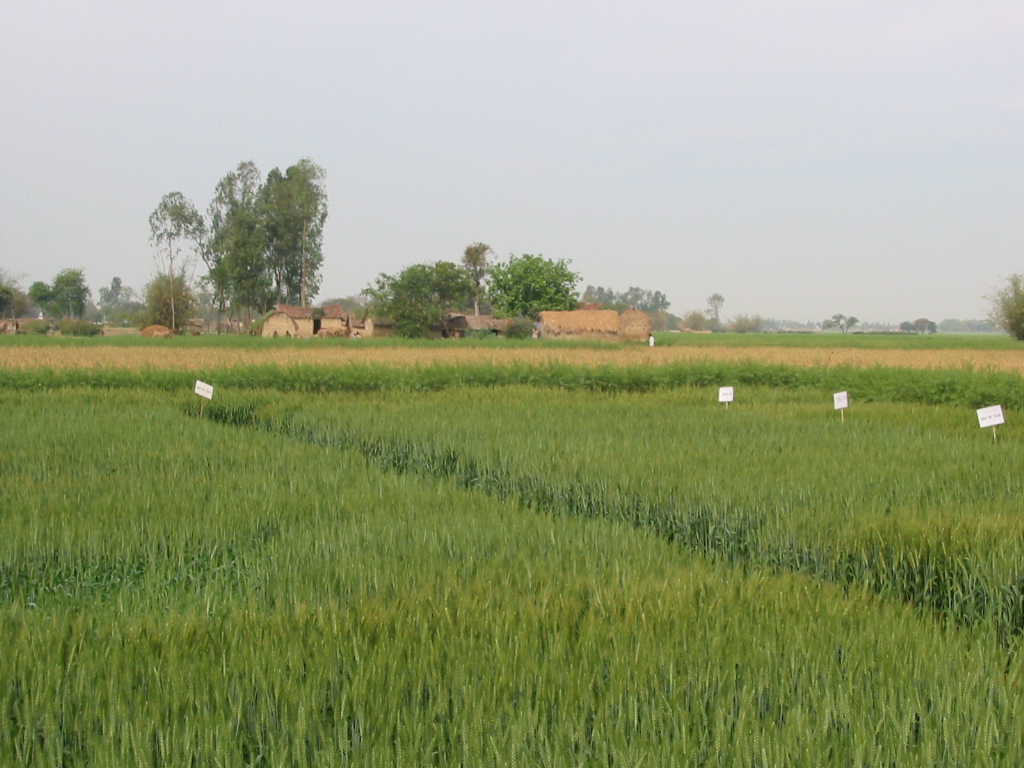Cross posted from cimmyt.org
EL BATAN, Mexico – Undernourishment affects some 795 million people worldwide – more than one out of every nine people do not get enough food to lead a healthy, active lifestyle, according to the U.N. Food and Agriculture Organization (FAO).
Almost 780 million of those undernourished people live in developing countries and about 94 percent live in Asia and Africa, FAO reports. But these statistics tell only part of the story. Some 2 billion people around the world suffer from micronutrient deficiency, according to the World Health Organization (WHO).
Also known as “hidden hunger,” micronutrient deficiency occurs when the food people eat does not provide enough vitamins and minerals. People living in South Asia and sub-Saharan Africa are hardest hit by hidden hunger, which is characterized by iron-deficiency anemia, vitamin A and zinc deficiency, the WHO reports.
Zinc is important for cellular growth, cellular differentiation and metabolism. Zinc deficiency limits childhood growth and decreases resistance to infections. Supplements may help to improve linear growth of children under 5 years of age, the WHO reports. Zinc deficiency affects about one-third of the global population.
Severe zinc deficiency can result in short stature — approximately 165 million children under five years of age are stunted, with the vast majority living in Africa and Asia — hypogonadism, impaired immune function, skin disorders, cognitive dysfunction, and anorexia.
Using food availability data, it is estimated that zinc deficiency affects about one-third of the world’s population, causing about 16 percent of lower respiratory tract infections, 18 percent of malaria and 10 percent of diarrheal disease, according to the WHO, which attributes about 800,000 deaths worldwide each year to zinc deficiency.
Tackling micronutrient deficiency, or “hidden hunger” is a major focus of theCGIAR HarvestPlus-led wheat biofortification breeding program at the International Maize and Wheat Improvement Center (CIMMYT) and its national program partners in South Asia.
The main objective of program and its national program partners in South Asia is to develop and disseminate competitive wheat varieties with high grain zinc (Zn) and other essential agronomic features. The emphasis of this program is to introduce novel sources of genetic diversity from wild species and landraces, into the adapted wheat background. Variations are being exploited through the use of shuttle breeding, which involves planting wheat trials at two locations in Mexico with different climatic conditions, resulting in widely adapted, durable rust and foliar disease resistant, high Zn wheat varieties. These new varieties are 20 to 40 percent superior in grain Zn concentration and are agronomically at par or superior to other popular wheat cultivars of south Asia.
The biofortification breeding program at CIMMYT uses new wheat varieties from the core-breeding program as background parents that are higher yielding, resistant to rust diseases, heat tolerant, water-use efficient and are 5 to 10 percent higher yielding than the current varieties.
The plan is to achieve genetic gains for grain Zn and agronomic traits through molecular tools such as marker-aided selections and genomic selection. Research is underway to build the capacity to undertake a more precise targeted transfer of genomic regions into adapted background to accelerate breeding efficiency. Additionally, to assure nutritional and food security it is paramount that suitable biofortified wheat varieties identified for specific growing conditions are released and the seed disseminated for widespread adoption.
Competitive high Zn wheat varieties have already been distributed to national program partners in South Asia to reach resource-poor smallholder farmers. Superior agronomic traits are inherent in these biofortified wheat varieties along with enhanced nutritional value. Adoption of these new varieties together with improved agronomy is expected to increase significantly with the development of new public-private partnerships.
In 2012, the HarvestPlus program of CGIAR devised a strategy in alliance with Banaras Hindu University and CIMMYT to reach thousands of wheat farmers with zinc-biofortified, disease-resistant wheat in the North Eastern Plain Zone of India. This area of Eastern Uttar Pradesh served as a platform for a proof-of-concept strategy to test and promote high Zn wheat varieties. Wheat productivity in this region is comparatively low when compared to other parts of the country, which is why it was chosen to replace existing varieties. After various demonstrations, in 18 villages many of the farmers became interested in adopting high Zn wheat. In 2013, when enough seeds were available, seed mini-kits were distributed to farmers in Eastern Uttar Pradesh. By 2014, more than 10,000 farmers had adopted high Zn wheat. Public-private partnerships are also gaining momentum in India’s seed sector , allowing for fast-track commercialization and leading to more than 50,000 farmers benefiting from zinc-biofortified wheat varieties during the 2015-2016 crop cycle.
Feedback from the progressive farmers was very encouraging. They were happy with the “Zinc Shakthi” variety for its good performance under both fully irrigated and limited irrigated conditions. For instance, this variety had about 5 to10 percent yield advantage under limited irrigated conditions over the currently grown local varieties. All the farmers expressed their satisfaction. Most of the farmers said that they will set aside some of the harvested seed for their own use and distribute it to neighboring farmers. Farmers also expressed their satisfaction about grain size, cooking quality, grain color and overall appearance.
